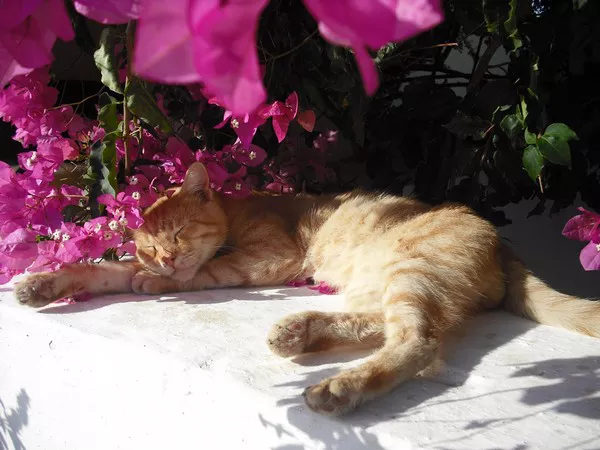Cats are known for their finicky eating habits, but when a normally voracious feline suddenly loses interest in food or water, it can be a cause for concern. As a responsible pet owner, recognizing the signs and knowing what steps to take can make all the difference in ensuring your cat‘s health and well-being. This essay will explore various reasons why a cat might refuse to eat or drink, along with practical strategies to address the issue and when to seek professional help.
Understanding the Importance of Eating and Drinking
Cats require a balanced diet to maintain their energy levels, support organ function, and keep their immune system strong. Dehydration and malnutrition can lead to serious health complications, including kidney failure, urinary tract infections, and even death. Therefore, it is crucial to monitor your cat’s eating and drinking habits regularly and take immediate action if you notice any changes.
Common Reasons Cats Refuse Food or Water
Medical Issues
Dental Problems: Tooth decay, gum disease, or oral ulcers can make eating painful.
Gastrointestinal Disorders: Conditions like inflammatory bowel disease (IBD), irritable bowel syndrome (IBS), or blockages can cause discomfort and loss of appetite.
Infections: Viral or bacterial infections can affect a cat’s appetite and energy levels.
Chronic Diseases: Conditions such as diabetes, hyperthyroidism, and cancer can lead to decreased appetite and thirst.
Environmental Factors
Stress: Changes in the environment, such as moving to a new home, introducing a new pet, or loud noises, can stress cats and affect their eating habits.
Feeding Routine: Inconsistent feeding times or changes in food type can confuse and deter cats from eating.
Food Location: Cats may avoid eating if their food bowl is placed near their litter box or in a high-traffic area.
Behavioral Issues
Picky Eaters: Some cats are naturally selective about their food and may refuse certain types or brands.
Boredom: Lack of stimulation or enrichment can lead to disinterest in food.
Overfeeding: Excessive treats or overfeeding can reduce a cat’s appetite for regular meals.
Recognizing the Signs
It’s essential to recognize the early signs that your cat might not be eating or drinking enough. These signs include:
Weight Loss: A noticeable decrease in body weight over a short period.
Lethargy: Reduced activity levels and lack of energy.
Dehydration: Dry gums, sunken eyes, and poor skin elasticity.
Vomiting or Diarrhea: Frequent or persistent digestive issues.
Changes in Urination: Decreased frequency or volume of urine.
Immediate Steps to Take
Assess the Environment
Ensure the feeding area is quiet and free from disturbances.
Place the food bowl away from the litter box and other pets.
Maintain a consistent feeding schedule.
Check the Food and Water
Ensure the food is fresh and has not expired.
Offer different types of food, including wet and dry options.
Provide clean, fresh water in a separate bowl from the food.
Create a Comfortable Feeding Experience
Use shallow, wide bowls to prevent whisker fatigue.
Warm up canned food slightly to enhance its aroma.
Hand-feed small amounts to encourage eating.
Encourage Hydration
Offer multiple water sources, including water fountains or running water.
Add a little low-sodium chicken broth to water to make it more appealing.
Monitor water intake and ensure the cat is drinking regularly.
Long-Term Strategies
Gradual Diet Changes
Transition to a new food gradually over several days to avoid digestive upset.
Consult with a veterinarian to choose a diet that meets your cat’s specific needs.
Enrichment and Stimulation
Provide interactive toys and playtime to increase physical activity.
Create vertical spaces and perches to satisfy a cat’s natural climbing instincts.
Rotate toys and food puzzles to keep the cat engaged.
Regular Veterinary Check-ups
Schedule routine exams to monitor your cat’s overall health.
Discuss any concerns with your veterinarian and follow their recommendations.
When to Seek Professional Help
If your cat continues to refuse food or water despite your efforts, it’s important to seek veterinary care promptly. Signs that warrant immediate attention include:
- Complete Loss of Appetite for More Than 24 Hours
- Persistent Vomiting or Diarrhea
- Significant Weight Loss
- Difficulty Breathing or Rapid Breathing
- Lethargy or Weakness
A veterinarian can perform a thorough examination, run diagnostic tests, and provide appropriate treatment to address underlying health issues.
Conclusion
When your cat won’t eat or drink, it can be a distressing situation. By understanding the potential causes and taking proactive steps, you can often resolve the issue and ensure your cat’s health and happiness. Remember, early intervention and regular veterinary care are key to maintaining your feline friend’s well-being. With patience, care, and attention, you can help your cat overcome its reluctance to eat and drink, and enjoy a long and healthy life.
Related topic:



























